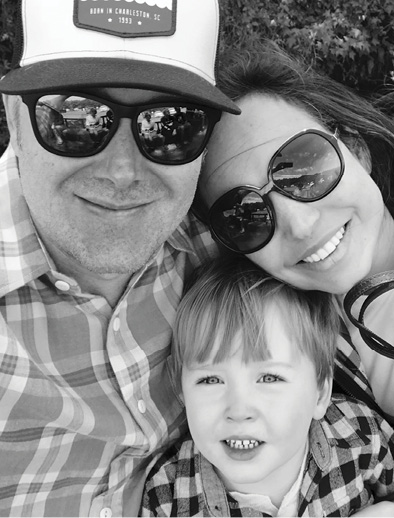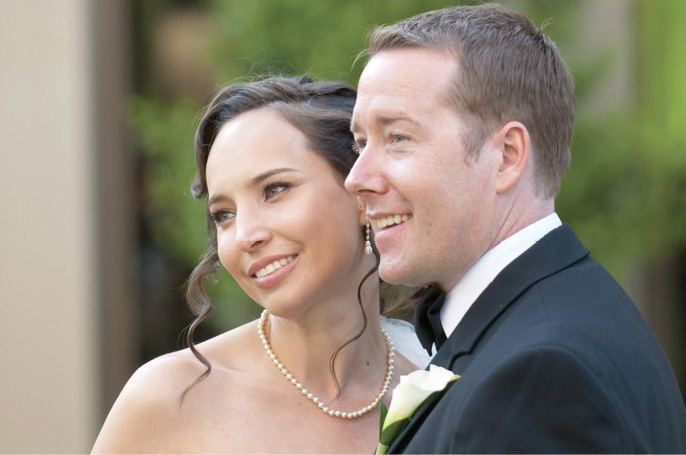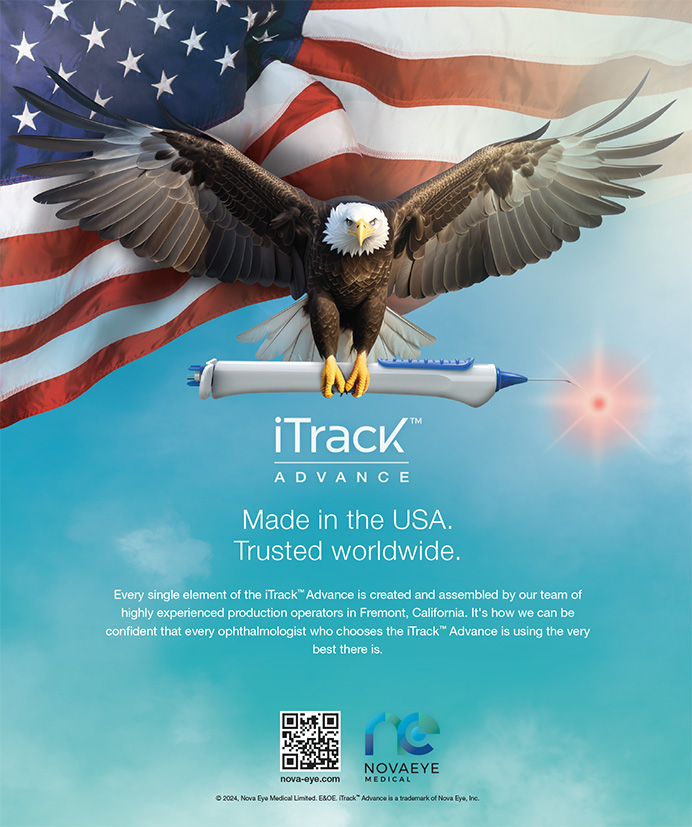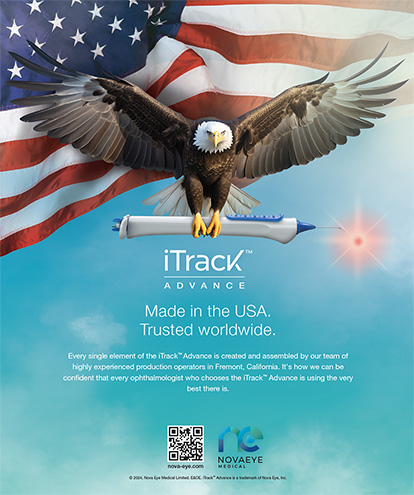It all began when George O. Waring IV, MD, invited Karolinne Maia Rocha, MD, PhD, to see his electronic poster, then smoothly transitioned into an invitation to walk on the beach. Before long, Dr. Rocha relocated from Brazil to the United States, where she had to redo her training before joining Dr. Waring at the Medical University of South Carolina. Now, she works in academia while he runs a private practice.
How did you meet?
Karolinne Maia Rocha, MD, PhD: I was doing my refractive surgery fellowship at the Cleveland Clinic, and George, at that time, was completing his cornea/refractive fellowship in Kansas City. That year, we were presenting at the same meetings, and the very first time we met was at the Wavefront Congress. I served as an editor for a supplement of the Journal of Refractive Surgery, and George had submitted a paper—that’s how we started the conversation. And it was really cute that George invited me to see his poster at ARVO. He had an electronic poster that was very cool, digitally flying through a cornea. And after he showed it to me, he said, “By the way, we can maybe go for a walk on the beach.”
George O. Waring IV, MD: The other side of the story is that I had submitted an article to the Journal of Refractive Surgery and Karolinne was the guest editor. She had an abundance of edits and basically tore my paper to shreds. I was a big fan of her work in extended depth of focus, and I had never met her before, but I always thought she was really pretty. And, so, when I saw her at that meeting, I went up and introduced myself and thanked her for her constructive criticism.
Karolinne: I did my training and PhD initially in Brazil and went to the Cleveland Clinic for my postdoctorate in refractive surgery, which is when we started dating and then got engaged. I decided that the United States would be my new country. I needed to repeat my entire training, including my internship and residency, and I went on to complete another fellowship. That was really hard because we were apart for a couple of years. I was at the Cleveland Clinic, and George had taken a position at the Medical University of South Carolina (MUSC). So, when I finished everything, I took a job in the same department as George.
What role do you each play at work?
George: When Karolinne joined the department at MUSC, we had the opportunity to essentially run the division together, which was really fabulous. We would have one day a month when we would operate together with very complex cases, and it was a special opportunity to get to work together, operate together, and run a division together. Nine months ago, I started my own practice.
Karolinne: I’m running the Cornea and Refractive Division at MUSC, and George is doing fabulous in private practice.
George: We still do a lot of research together. It’s really neat: We have both an academic arm and a private institute arm for the research.
Karolinne: We are currently responsible for an international fellowship and a clinical fellowship program. We are writing a book right now on femtosecond lasers.
How do you maintain balance with home obligations?
Karolinne: On my OR days, usually Mondays, I leave very early in the morning, but I usually finish early and I am home by 3:30 or 4 pm, so I have time to do some activities with family. At the university, I have a research day that I can kind of balance when our son, George V, is napping. I need to be very efficient, so I do things when he’s sleeping. On weekends we spend family time together (Figure 1).
George: Karolinne is like Supermom: She sees almost 40 to 50 patients a day and then gets home before 6 pm to be with little George. Whenever we’re not working, we’re spending time with him, which is any time before 7 am or after 5 or 6 pm and on weekends. If at all possible, we try to bring him with us when we travel to conferences and try to show him different parts of the world and of the country. It’s a wonderful balance and a true blessing. We just couldn’t be happier.
Karolinne: I love what I do, but family comes first. Sometimes I need to compromise on some things, like just going to the gym, because I try to spend as much time as I can with family.

Figure 1. Parenthood is one part of the couple’s adventure together.
What is the biggest challenge you face as a couple, and how do you overcome it?
George: I think the biggest challenge is work-life balance. We’re both very focused on our work, and we do the same thing, so we have the same deadlines, the same travel schedules, the same interests, and the same passion for what we do. But, more than that, we’re focused on our family and our son and trying to be the best husband and wife (Figure 2) that we can be and the best mom and dad that we can be. And so, we’re constantly having to pay attention to every second so that it’s optimized according to our life goals.

Figure 2. The couple on their wedding day.
What is the biggest reward?
Karolinne: It’s fun to go to conferences together and to be able to discuss new technologies and complex cases. I think we really understand each other; we understand what each of us does and we support each other. I think we just complement each other.
George: Karolinne is one of the people who I respect the most in all of ophthalmology, and I got to marry her. Most importantly, our family is our first and foremost priority.




